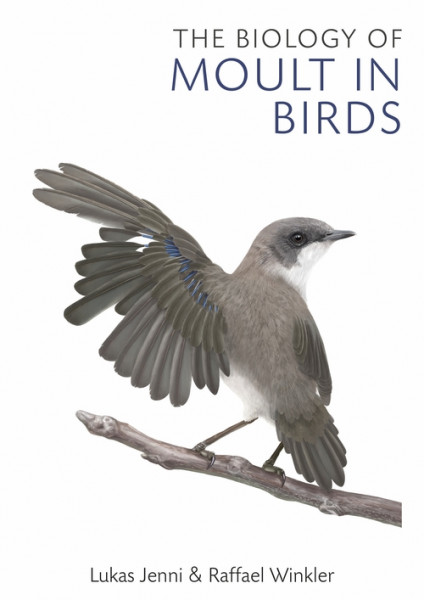
Publisher: Helm, London
Publication Year: 2020
Binding: 2
Page Count: 320
ISBN Number: 9781472977229
Price: £55.00
The Biology of Moult in Birds
Moult is a fascinating basic life history event in birds which, despite its major impact on their life cycle, is relatively poorly understood and even neglected. This is a companion to the excellent Moult and Ageing of European Passerines (secodnd edition, 2020) by the same authors, previously reviewed in BTO News 335. It started life as a revision of the short summary in the introductory chapters of the Moult and Ageing of European Passerines (first edition, 1994) for the second edition, before being expanded into a book in its own right, as arguably the first general review on moult in birds covering the biology, physiology and ecology of moult.
The book itself is divided up into five main chapters covering: 1) the functions of moult, 2) plumage maintenance and why it needs renewal, 3) the actual process of moulting, 4) the effects of environmental conditions during moult on plumage quality and its consequences, and 5) how moult fits into the annual cycle with regards to moult strategies. Each chapter can more or less stand on its own, which does result in some repetition due to the same topics and findings being relevant to more than one area, but it does also avoid the need to read it from cover to cover if you are primarily interested in only part of the work. To aid this, each chapter is subdivided into sections and subsections with helpful short summaries at the end of many of the subsections, and a longer summary and concluding remarks at the end of each section to summarise current knowledge and suggest further research ideas, allowing readers to get the gist of sections quickly.
While perhaps not the lightest of reading at about 240 pages plus many pages of references, the more complex topics are explained and summarised well and anybody with an interest in bird moult, such as bird ringers, should find it easy to get into. It’s not a guidebook so don’t expect species accounts, but a wide range of species is mentioned as the authors draw from moult literature across the bird families, highlighting both relatively common moult strategies and traits along with the more unusual, including at times considering differences in moult of closely related species and even subspecies. As the authors, their work (and perhaps most of this book’s likely readers) are based in Europe, there is perhaps an understandable slight bias towards European breeding and moulting species so a more in-depth exploration of the complex moults of North American passerines or topical moulting species including our own migrants could have being interesting, but this a minor quibble and they are still covered. The figures, both diagrammatic and photographs, are excellent and informative throughout, including many example photos of bird wings with in-depth explanatory captions and sometimes labelling in similar vein to their books on European passerine,s although also including non-passerines.
All in all, if you want a deep understanding of bird moult biology and processes this book is easily the most in-depth book in existence on this topic while remaining accessible. Although the primary readership is likely to be bird ringers and academics, this book is of potential interest to all ornithologists seeking a greater understanding of bird moult and appearance.
Book reviewed by Hugh Hanmer
Buy this book




Share this page